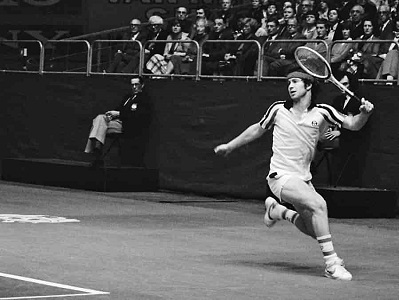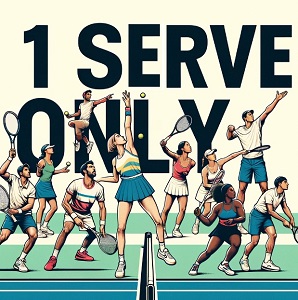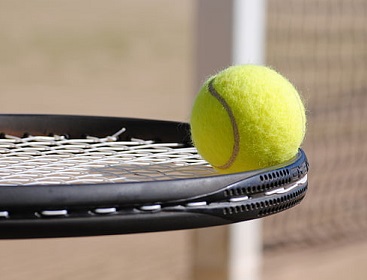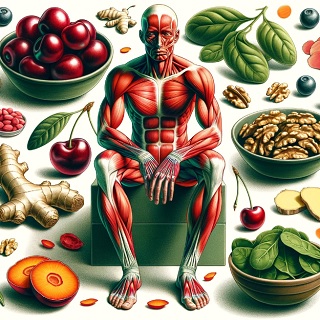The Enduring Legacy of John McEnroe in Tennis

John McEnroe emerged on the professional tennis scene in the late 1970s, bringing with him a revolutionary style of play and an unmatched level of intensity. With seven Grand Slam singles titles and nine Grand Slam doubles titles, McEnroe’s achievements are a testament to his enduring impact on the sport.
Early Career and Breakthrough
John McEnroe’s ascent to tennis stardom began with a stellar performance at Wimbledon in 1977, where, as a young 18-year-old amateur, he made a surprising run to the semi-finals. This breakthrough showcased his exceptional talent and announced his arrival as a formidable force in the sport. His unorthodox playing style, characterized by precision volleys, deft touch, and aggressive serve-and-volley tactics, challenged the conventions of baseline play that were prevalent at the time. Off the court, his brash New York attitude and theatrical antics garnered as much attention as his undeniable skill with a racket. McEnroe’s early career was also marked by his entry into the world of professional tennis, quickly establishing himself as a top player. His rapid rise was highlighted by a string of successes, including winning the mixed doubles title at the French Open in 1977, and his first singles Grand Slam title at the US Open in 1979, defeating Vitas Gerulaitis in the final. McEnroe’s blend of raw talent, dedication to improving his game, and his ability to perform under pressure played a pivotal role in his transition from a tennis prodigy to one of the game’s elite players. This period set the stage for what would become a legendary career, as McEnroe continued to push the boundaries of the sport with his exceptional skill and unique personality.
Grand Slam Success
John McEnroe’s success in Grand Slam tournaments is a defining chapter in his illustrious tennis career. He clinched his first major singles victory at the US Open in 1979, a triumph that was both a testament to his precocious talent and a prelude to his dominance in the sport. Between 1979 and 1984, McEnroe amassed seven Grand Slam singles titles, including three at Wimbledon (1981, 1983, 1984) and four at the US Open (1979, 1980, 1981, 1984), a period during which his fierce rivalry with Bjorn Borg and later with Ivan Lendl and Jimmy Connors characterized the men’s game. His 1980 Wimbledon final against Borg, where he lost in a heartbreaking five-setter, remains one of the most epic matches in tennis history, featuring the famous 18-16 tiebreak in the fourth set. McEnroe’s artistry and combativeness on the court were on full display during these matches, with his superb volleys, precision passing shots, and relentless pursuit of victory becoming the hallmarks of his playing style. His doubles prowess was equally impressive, as he secured nine Grand Slam doubles titles, which underscored his versatility and tactical intelligence. McEnroe’s dominance at these prestigious events during the early to mid-1980s not only secured his place among the greats of the game but also influenced the tactical evolution of tennis, highlighting the effectiveness of aggressive net play and psychological warfare on the court. His Grand Slam achievements are a significant part of his legacy, reflecting both his physical and mental mastery of the sport.
Playing Style and Contributions
John McEnroe’s playing style and contributions to tennis are marked by a unique combination of technical prowess and creative artistry, which left an indelible mark on the sport. Known for his superb touch and volleying finesse, McEnroe brought a distinctive flair to the game with his exceptional net play, sharp angles, and masterful strategy. His ability to read the game and anticipate his opponent’s moves allowed him to execute shots with precision and deceptive ease, often leaving spectators and opponents alike in awe. McEnroe’s serve-and-volley approach was a throwback to an earlier era of tennis, yet he executed it with such skill that it remained effective even as the sport evolved towards baseline dominance. Beyond his on-court play, McEnroe’s contributions include his candid and insightful tennis commentary, which has enriched the viewing experience for fans worldwide. His coaching and mentorship roles have also helped shape up-and-coming players, extending his influence to the next generation of tennis talent. Furthermore, McEnroe has been involved in numerous charitable efforts, using his fame to raise funds and awareness for various causes. His commitment to tennis extends to his participation in senior and exhibition circuits, keeping the competitive spirit of the sport alive. McEnroe’s holistic approach to his sport goes beyond just winning matches; it encompasses a broader vision of promoting and enhancing the game of tennis for all involved.
Controversies and Competitive Nature
John McEnroe’s competitive nature on the tennis court was as legendary as his skill, often manifesting in fiery exchanges and contentious disputes with umpires and officials. His confrontations became as much a part of his identity as his signature left-handed serve-and-volley game. Infamous for his on-court outbursts, McEnroe was known to challenge calls and berate chair umpires, actions that earned him both admonition and a begrudging respect for his refusal to passively accept decisions he perceived as incorrect. The phrase « You cannot be serious! »—shouted in disbelief at a Wimbledon umpire’s call—became an emblematic outburst that encapsulated his fiery demeanor and has since become enshrined in tennis lore. These incidents, while casting a shadow over his sportsmanship, also highlighted the intense pressure and competitiveness of elite tennis and demonstrated McEnroe’s absolute commitment to excellence and victory. His controversies stirred public debate about professionalism and decorum in sports, inadvertently setting the stage for discussions on the pressures faced by professional athletes. Despite the negative attention, McEnroe’s passion for tennis and his desire to win were undeniable and served to intensify the drama and appeal of the matches in which he played. His confrontational style, combined with his undeniable talent, made him a figure impossible to ignore in the sport and played a part in drawing new audiences to tennis, contributing to its growth in popularity during the 1980s.
Post-Retirement Influence
Following his retirement from professional tennis, John McEnroe has remained a significant figure in the sport, channeling his vast experience and knowledge into a successful career as a broadcaster and commentator. His sharp insights and unfiltered opinions have provided depth to tennis broadcasts, offering viewers a raw and knowledgeable perspective that only a former player of his caliber could provide. McEnroe’s post-retirement influence extends to his work as a coach, where his understanding of the game’s mental and technical aspects has benefited those he has mentored. He continues to shape the sport’s landscape through his participation in senior tours and exhibition matches, drawing crowds with his undiminished skill and competitive edge. McEnroe also contributes to the growth of tennis with his involvement in youth development programs, recognizing the importance of nurturing future generations. His charity work, including his own John McEnroe Tennis Academy, has opened up the game to underprivileged children, providing opportunities that were previously inaccessible to many. Through these avenues, McEnroe has sustained his presence in the tennis world, leveraging his fame to foster talent and promote the sport, ensuring that his influence is felt long after the end of his professional playing career.
Conclusion
John McEnroe’s influence on tennis is multifaceted. He not only revolutionized how the game is played but also how it is perceived by the public. His legacy is a complex amalgam of extraordinary talent, passionate competition, and the drive to remain actively involved in shaping the future of tennis.





